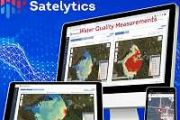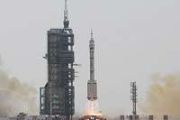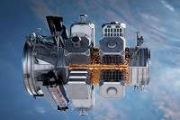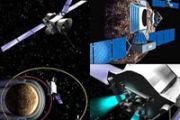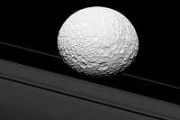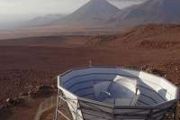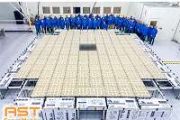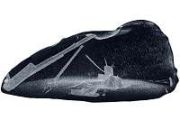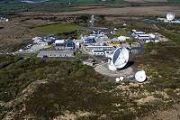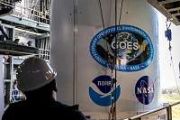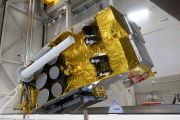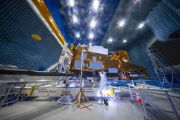
Copernical Team
Mapping the Universe's Earliest Structures with COSMOS-Webb
 When NASA's James Webb Space Telescope begins science operations in 2022, one of its first tasks will be an ambitious program to map the earliest structures in the universe. Called COSMOS-Webb, this wide and deep survey of half-a-million galaxies is the largest project Webb will undertake during its first year.
With more than 200 hours of observing time, COSMOS-Webb will survey a large pat
When NASA's James Webb Space Telescope begins science operations in 2022, one of its first tasks will be an ambitious program to map the earliest structures in the universe. Called COSMOS-Webb, this wide and deep survey of half-a-million galaxies is the largest project Webb will undertake during its first year.
With more than 200 hours of observing time, COSMOS-Webb will survey a large pat Cloud data bursts from space move astronauts closer to Mars
 When Michael Collins peeked out a portal on the Apollo 11's command module, orbiting the moon alone while Neil Armstrong and Buzz Aldrin made their historic lunar walk below, he saw a blue and white planet with no borders. It struck him that humans would have a better future if political leaders also could see the world that way - as a whole globe - and learn to collaborate.
But he wouldn'
When Michael Collins peeked out a portal on the Apollo 11's command module, orbiting the moon alone while Neil Armstrong and Buzz Aldrin made their historic lunar walk below, he saw a blue and white planet with no borders. It struck him that humans would have a better future if political leaders also could see the world that way - as a whole globe - and learn to collaborate.
But he wouldn' BRICS to set up remote-sensing satellite network
 China will work with Russia, India, Brazil and South Africa to establish a network of remote-sensing satellites to help to deal with global challenges such as climate change, major disasters and environmental deterioration.
The heads of national space agencies in BRICS countries met on Wednesday via video link and signed the Agreement on the Cooperation on BRICS Remote Sensing Satellite Co
China will work with Russia, India, Brazil and South Africa to establish a network of remote-sensing satellites to help to deal with global challenges such as climate change, major disasters and environmental deterioration.
The heads of national space agencies in BRICS countries met on Wednesday via video link and signed the Agreement on the Cooperation on BRICS Remote Sensing Satellite Co 23rd SpaceX commercial resupply mission launches bone, plant, and materials studies to ISS
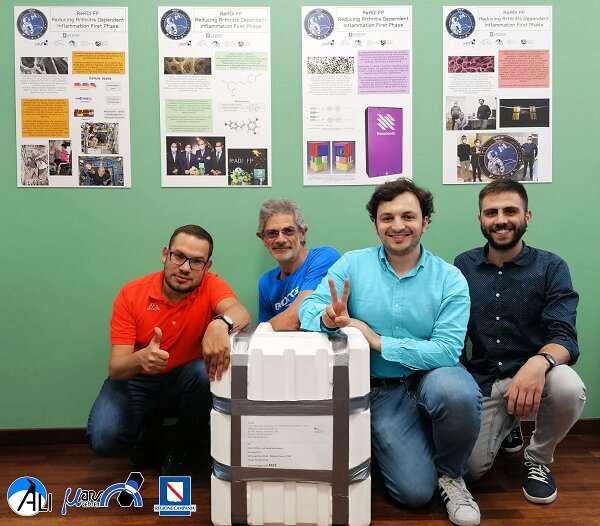
The 23rd SpaceX cargo resupply services mission carrying scientific research and technology demonstrations to the International Space Station is targeted to launch in late August from NASA's Kennedy Space Center in Florida.
International Space Station experiment expands DNA research toolkit using CRISPR
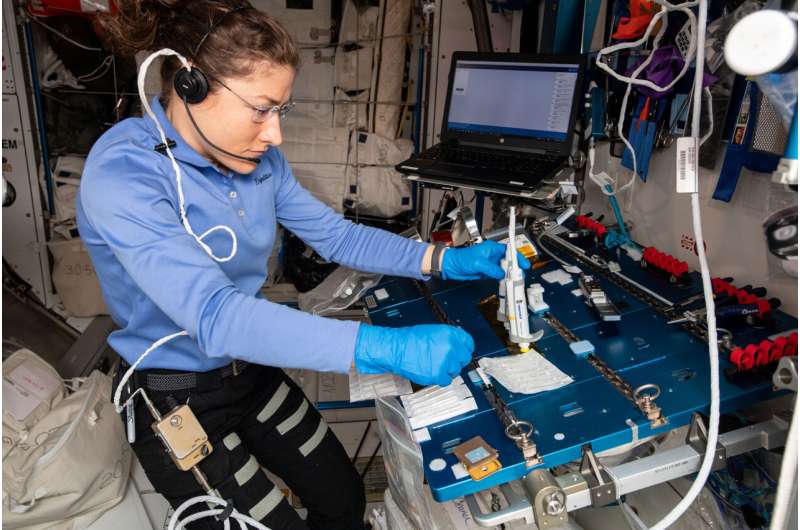
Studying DNA repair is key to future space exploration, which could expose humans to risk of DNA damage caused by radiation. Conditions in space also could affect the way the body repairs such damage, potentially compounding that risk.
Thanks to the work of four students, a team of researchers, and the first use in space of the CRISPR genome editing technique, a recent investigation aboard the International Space Station successfully generated breaks in the DNA of a common yeast, directed the method of repair, and sequenced the patched-up DNA to determine whether its original order was restored.
Ariane 5 upper stage for Webb heads for Europe's Spaceport
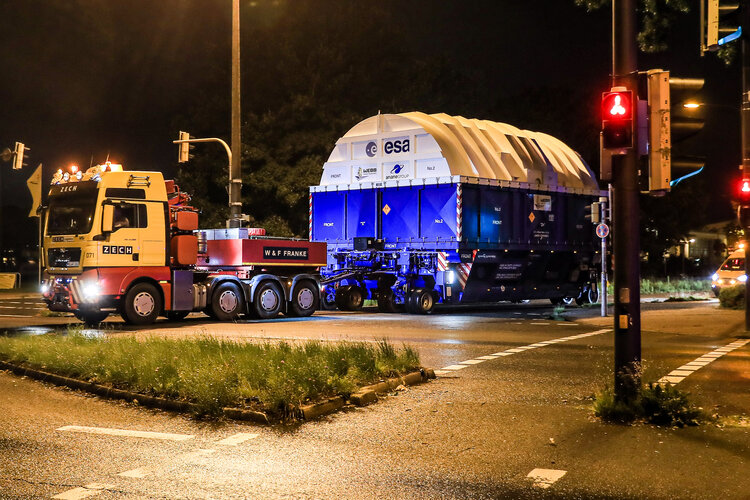 Image:
The upper stage of the Ariane 5 rocket which will launch the James Webb Space Telescope is on its way to Europe’s Spaceport
Image:
The upper stage of the Ariane 5 rocket which will launch the James Webb Space Telescope is on its way to Europe’s Spaceport Fast changes between the solar seasons resolved by new sun clock
 Violent activity on our Sun leads to some of the most extreme space weather events on Earth, impacting systems such as satellites, communications systems, power distribution and aviation. The roughly 11 year cycle of solar activity has three 'seasons', each of which affects the space weather felt at Earth differently: (i) solar maximum, the sun is active and disordered, when space weather is sto
Violent activity on our Sun leads to some of the most extreme space weather events on Earth, impacting systems such as satellites, communications systems, power distribution and aviation. The roughly 11 year cycle of solar activity has three 'seasons', each of which affects the space weather felt at Earth differently: (i) solar maximum, the sun is active and disordered, when space weather is sto Hughes awarded IDIQ Contract by U.S. Air Force to offer enterprise satellite networking solutions
 Hughes Network Systems has been awarded one of several prime positions on an indefinite-delivery/indefinite-quantity (IDIQ) contract with a ceiling of $950,000,000 by the U.S. Air Force to support its Advanced Battle Management System (ABMS). Hughes will offer flexible satellite communications solutions that leverage open systems design, modern software and algorithm development in order to enab
Hughes Network Systems has been awarded one of several prime positions on an indefinite-delivery/indefinite-quantity (IDIQ) contract with a ceiling of $950,000,000 by the U.S. Air Force to support its Advanced Battle Management System (ABMS). Hughes will offer flexible satellite communications solutions that leverage open systems design, modern software and algorithm development in order to enab Raytheon Intelligence and Space completes Next Gen OPIR Block 0 Milestone
 Raytheon Intelligence and Space, a Raytheon Technologies business, completed a Critical Design Review of its competitive sensor payload design for the U.S. Space Force's Next-Generation Overhead Persistent Infrared or Next-Gen OPIR, Block 0 GEO missile warning satellites, which are being designed and built by spacecraft prime contractor Lockheed Martin.
"Protecting the U.S. and our allies
Raytheon Intelligence and Space, a Raytheon Technologies business, completed a Critical Design Review of its competitive sensor payload design for the U.S. Space Force's Next-Generation Overhead Persistent Infrared or Next-Gen OPIR, Block 0 GEO missile warning satellites, which are being designed and built by spacecraft prime contractor Lockheed Martin.
"Protecting the U.S. and our allies Northrop Grumman demonstrates open architecture high-speed connectivity
 Northrop Grumman Corporation has validated the open architecture nature of its advanced gateway system offering by successfully integrating and demonstrating a new High Capacity Backbone (HCB) capability provided by L3Harris Technologies with one of Northrop Grumman's platform agnostic gateway systems. By combining existing gateway translations across existing data links and AI enhanced networki
Northrop Grumman Corporation has validated the open architecture nature of its advanced gateway system offering by successfully integrating and demonstrating a new High Capacity Backbone (HCB) capability provided by L3Harris Technologies with one of Northrop Grumman's platform agnostic gateway systems. By combining existing gateway translations across existing data links and AI enhanced networki 







